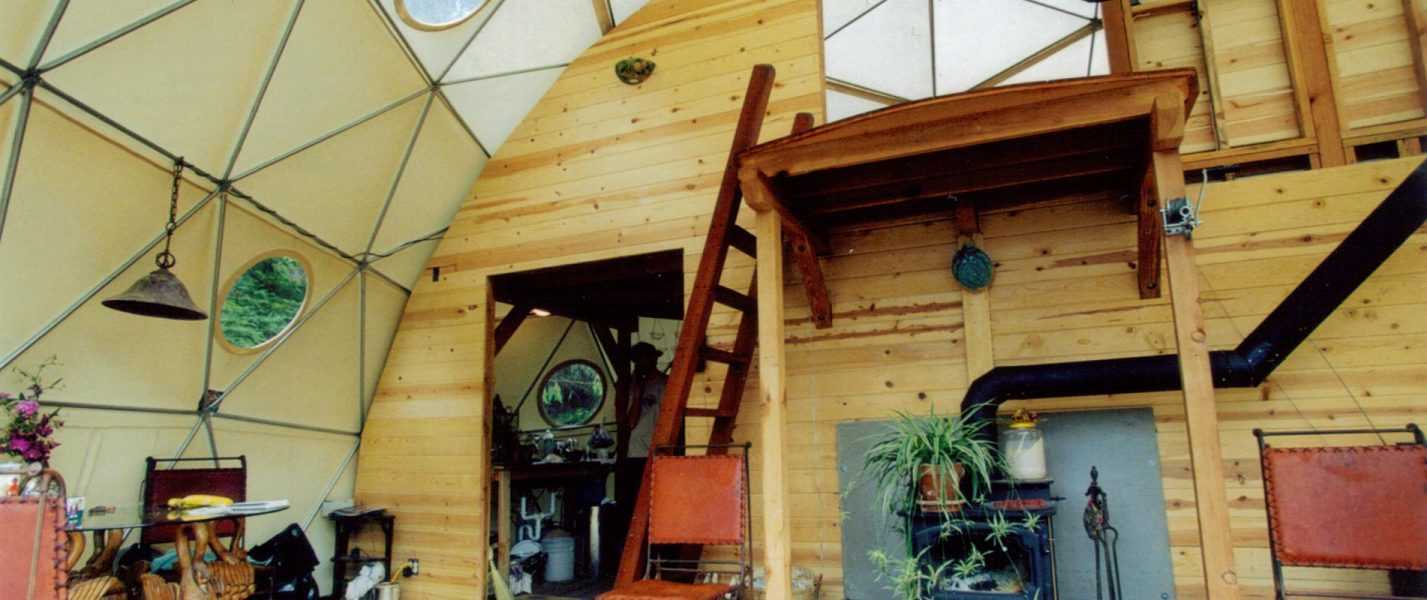Prefab Dome Home Building Systems Manufactured by Pacific Domes since 1980
Over the years, Pacific Domes’ clients exploring off-grid dome life have raised questions about how to build a 2-story dome home. It’s our aim to explore a few of these questions in this blog post – such as, “is it worth considering a 2-story dome home build over a single story build?”
A geodesic dome’s claim to fame is its proven track record of withstanding nature’s extremes. As one of the strongest structures known to man, ecoliving geodesic domes have gained world-wide acceptance in alt-housing markets due to the fact that they can be transported to remote off-grid locations.
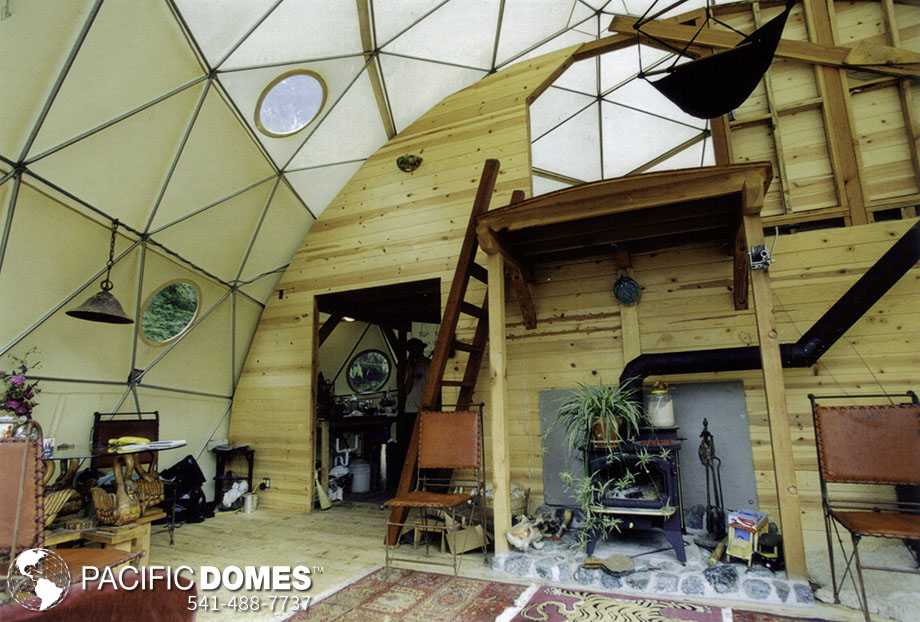
At Pacific Domes, we’re also, asked questions, such as:
- “Can I build a 2-story off-grid dome home?
- “Can I build a basement and attach the dome structure?”
- “Can I build a stem wall to create a multi-level dome home?”
The answer is, YES to all of the above – prefab dome building systems can be anchored to any structurally sound foundation that can support the lightweight frame of the geodesic structure – yet, their freestanding design and construction is self-supporting and stronger than a conventional house!
After weighing-in on some of the features and benefits, we think you will agree that a prefab geodesic dome home makes a lot of sense when it comes to building off-grid. Considered eco-friendly because you are using less materials, a dome home kit is easy on the pocketbook, too.
Minimal DIY Construction Skills Needed
Prefab kits can be easily transported and set up on your building site with simple ratcheting tools. And, clients are delighted to discover that they can erect their own DIY 2-story or split level off-grid dome home with minimal construction skills, too.
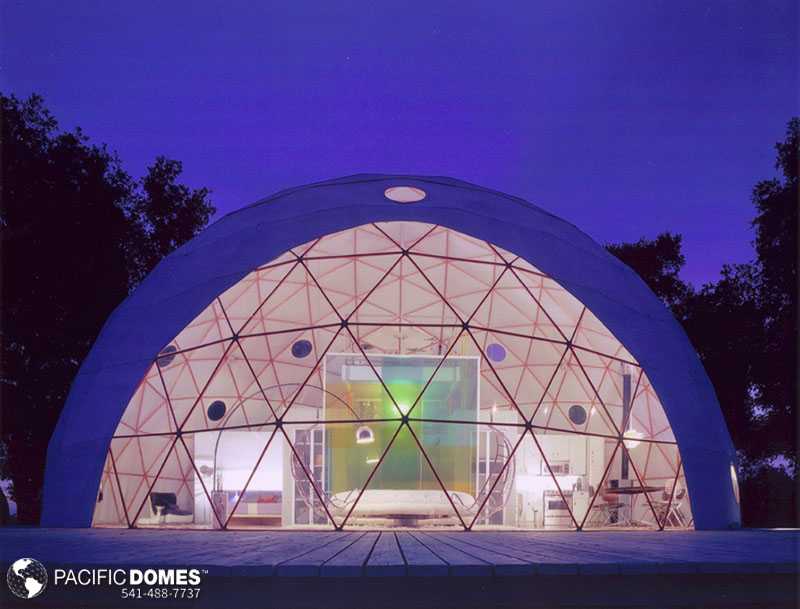
Geodesic dome homes exert a light, ecoliving footprint for a close-to-Nature lifestyle. Portable domes go up quickly in just about any terrain, environment or climate.
Benefits of Building a Split-level Dome Home
From cozy 16-square foot tall cottages to spacious 44-square foot homes, split-level dome homes are a great building option for steep and sloping lots. The larger geodesic domes have an added benefit of high-ceilings to accommodate a loft or 2-story.
Advantages to multi-level floor levels:
1) Staggered levels are often more economical to build compared to other plans because they require less excavation and foundation work – even, with the addition of a basement level set against a slope.
2) Dome builders can create more outdoor living space – such as, decks and patios.
3) Adding a loft or second level, allows space on the ground level to create separate rooms. It’s a great place to add a kitchen, bathroom, spare bedroom or storage space.
4) Maintenance is less expensive – there’s less exterior surface area to maintain.
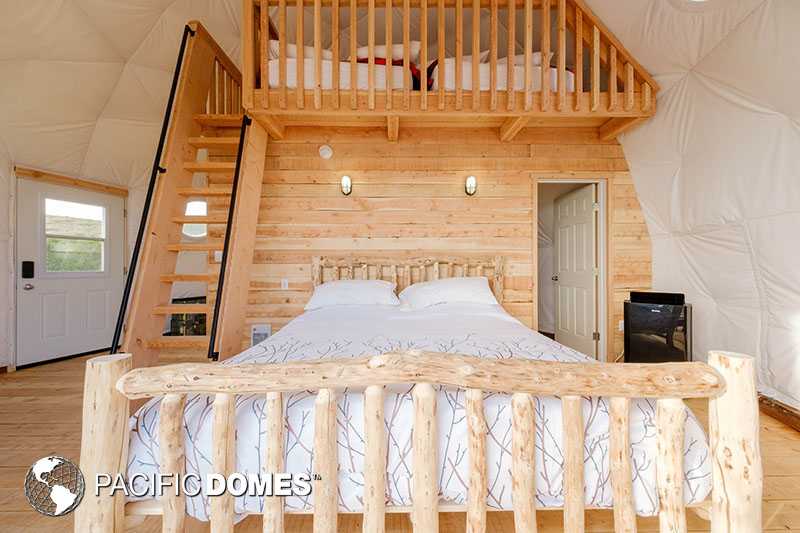
Can I build a dome over a basement?
Yes! That said, it might be prudent to consider building an all-new insulated basement or split-level, rather than building over an existing uninsulated basement. And, you’ll have the added benefit of mapping out any plumbing or electrical requirements. It pays to do a little research or get expert advice into the type of soil, light-weight back-fill materials and other factors that may affect the integrity of basement walls, as well.
Permitting Your Dome Home
In the event that your area requires a building permit, don’t let the application process stand between you and building your off-grid dome home. Pacific Domes has everything you need to support you through the building process and ensure your plans meet the strictest engineering standards and local building codes.
You might be surprised to learn that freestanding geodesic domes are considered temporary structures and many building departments may not even require permits. This is, especially true, when it comes to backyard sizes in rural neighborhoods. Here’s why:
- Domes don’t require a foundation.
- And, they are often considered unoccupied structures.
Erring on the side of caution: Although, you may not agree with the concept of getting a building permit, it’s best not to start your project without prior investigation. In general, you’ll find that zoning and building departments are very helpful if you provide them with engineering blueprints and professional site plans from the start. After more than 40-years in business, Pacific Domes has set a precedent by helping customers, just like you, get their plans approved.
In recent years, there has been a near universal adoption of some version of the International Building Code (IBC). Although, governing codes haven’t actually changed much, enforcement and issues that building officials may want to address has increased.
In many urban areas, if it’s 200 sq. ft. or larger, you will need a permit and inspections. Anything that requires a permit is also taxed.
Zoning, Building Codes and Permits
Step 1: Zoning laws vary widely. Talking to your zoning department before you build is a necessary first step. Also, you may not need a building permit, once you complete a zoning permit.
Step 2: Once you’re satisfied that your proposed project meets with any zoning restrictions, you will have to investigate county building codes with your building department. Building codes look at the structural integrity and the physical appearance of a building.
Several factors determine a planning permit for a geodesic dome home. It typically depends on:
• your local building codes • your design (whether it’s on a deck or permanent foundation)
• location (how close it is to property lines) • size – in general, larger sizes increase the likelihood that you will need a permit • and , there may be restrictions on the number of buildings you can have on your property (not including your house); such as, detached garages, sheds and other structures.
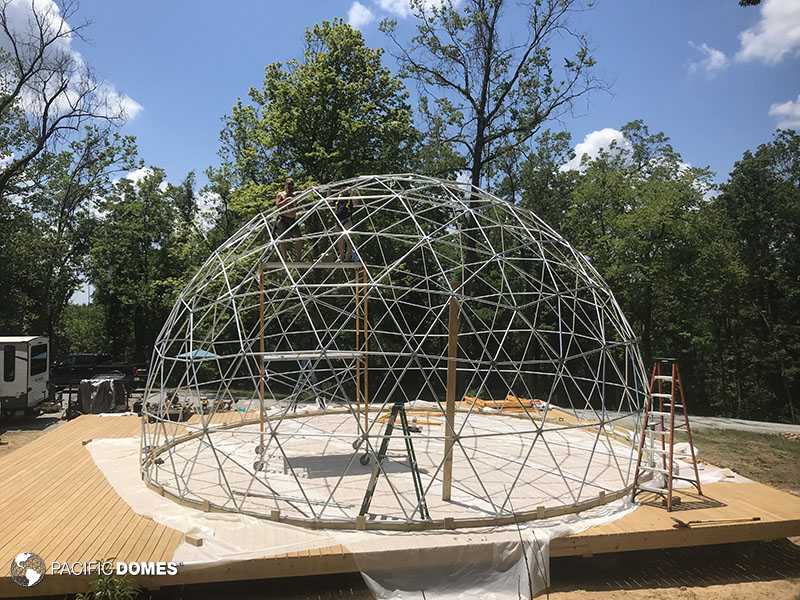
Ecoliving Dome Homes for a Sustainable Future
Geodesic Domes have gained world-wide popularity in non-traditional housing markets. An early pioneer in the sustainable building movement, Pacific Domes has been inspiring ecoliving geodesic dome projects, leading responsible stewardship worldwide, since 1980.
Next Step: Green-Building is sustainable building. When it comes to being resource efficient while exerting a light footprint, a geodesic dome is considered to be environmentally responsible and good stewardship of earth’s resources. It behooves you to make your county zoning and building departments aware that you are building an eco-friendly structure with up to 50% energy savings – and, that domes are rated for high winds and heavy snow-loads!
Many zoning and building departments have a limited understanding of prefab geodesic dome construction due to the fact that they spend much of their time dealing with conventional residential, industrial and commercial buildings. That said, it’s up to you to educate those frequently overworked officials by presenting them with professional engineering blueprints and site plans that will help them interpret code on your behalf. Pacific Domes can help.
It also helps to let your building department know that…
R. Buckminster Fuller, father of the modern-day geodesic dome, received a gold-medal award from the American Institute of Architects (AIA) in 1970 for his contribution in developing the geodesic dome.

The AIA citation reads… “The American Institute of Architects presents the 1970 Gold Medal, the highest honor it can bestow, to Richard Buckminster Fuller, engineer, inventor, mathematician, educator, cartographer, philosopher, poet, author, cosmogonist, industrial designer and architect, whose ideas, once considered visionary, have now received national and international acceptance. A man responsible for the design of the strongest, lightest and most efficient means of enclosing space yet devised by man. A man who has used himself as a laboratory of human response, who has at all times concerned himself with the social implications of his discoveries, who has understood that real wealth is energy, and a man whose objective was humanity’s success in the universe.”
Peace of Mind
Once you’ve studied the Guide to Purchasing and Building your DIY Dome Home and you’ve taken steps to purchase a Pacific Dome home, our professional in-house team is happy to provide you with what you might need to satisfy any building permits:
- Geodesic-engineered blueprints (CAD drawings)
- Customized 3-D renderings – Bring your project from conception to completion with our experienced 3D artists, who can help you simulate your construction environment and bring your dreams to life with realistic images.
- Load-bearing and technical data for frames, covers, etc.
- Fire certificates
- Anchoring instructions and construction expertise, etc.
- In-house and other Resources
Exploring Geodesic Dome House FAQ’S
To help you decide whether a 2-story dome home is for you, we invite you to explore Pacific Domes Knowledge Base of geodesic dome FAQ’s. and visit Pacific Domes YouTube channel.
We’re here to help!
Pacific Domes can help you design your 2-story or split level floor plan. Our team brings over 40-years of expertise in prefab dome home design quality, style and distinction. For more information chat with one of our Customer Support Representatives today!
